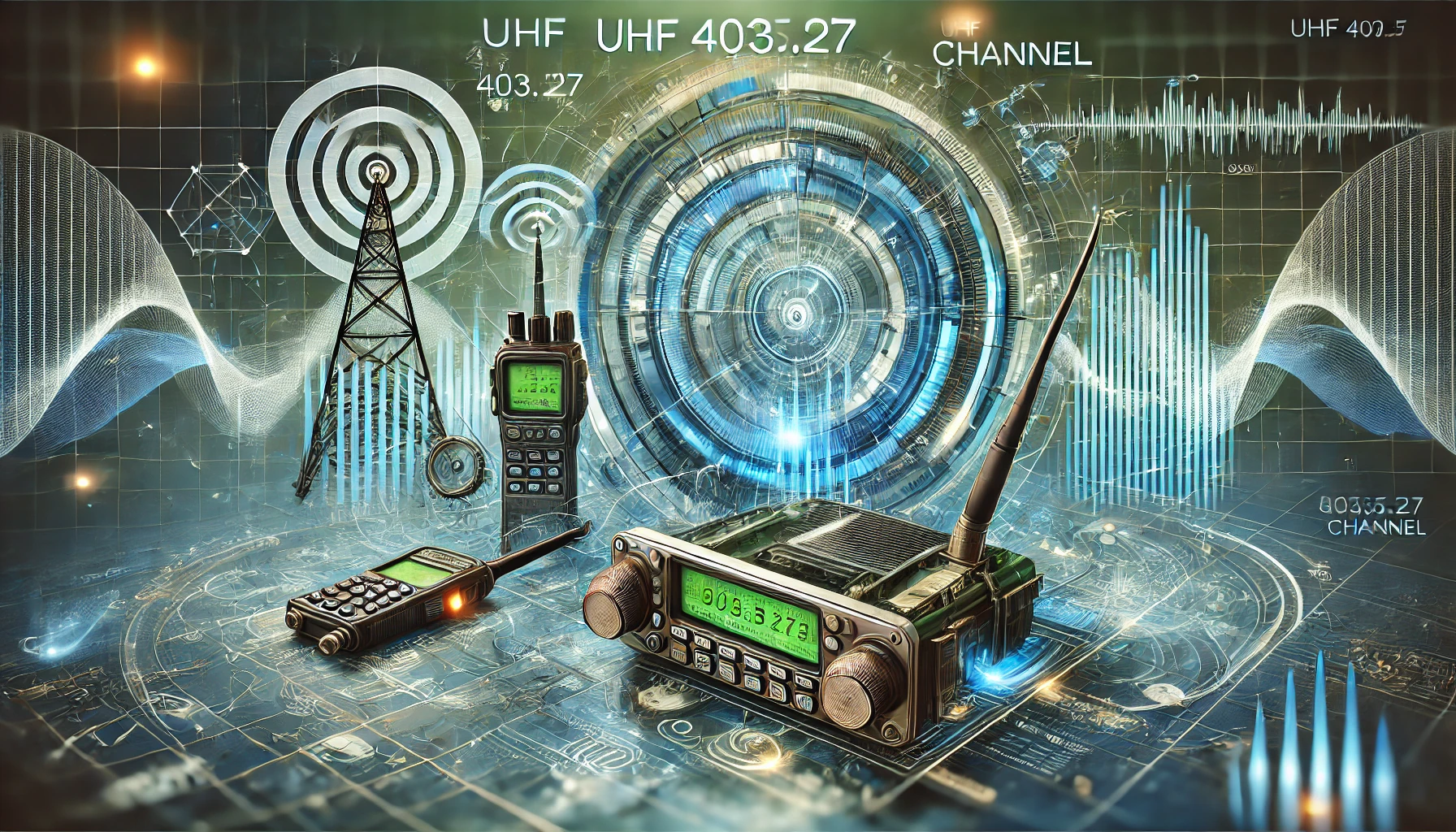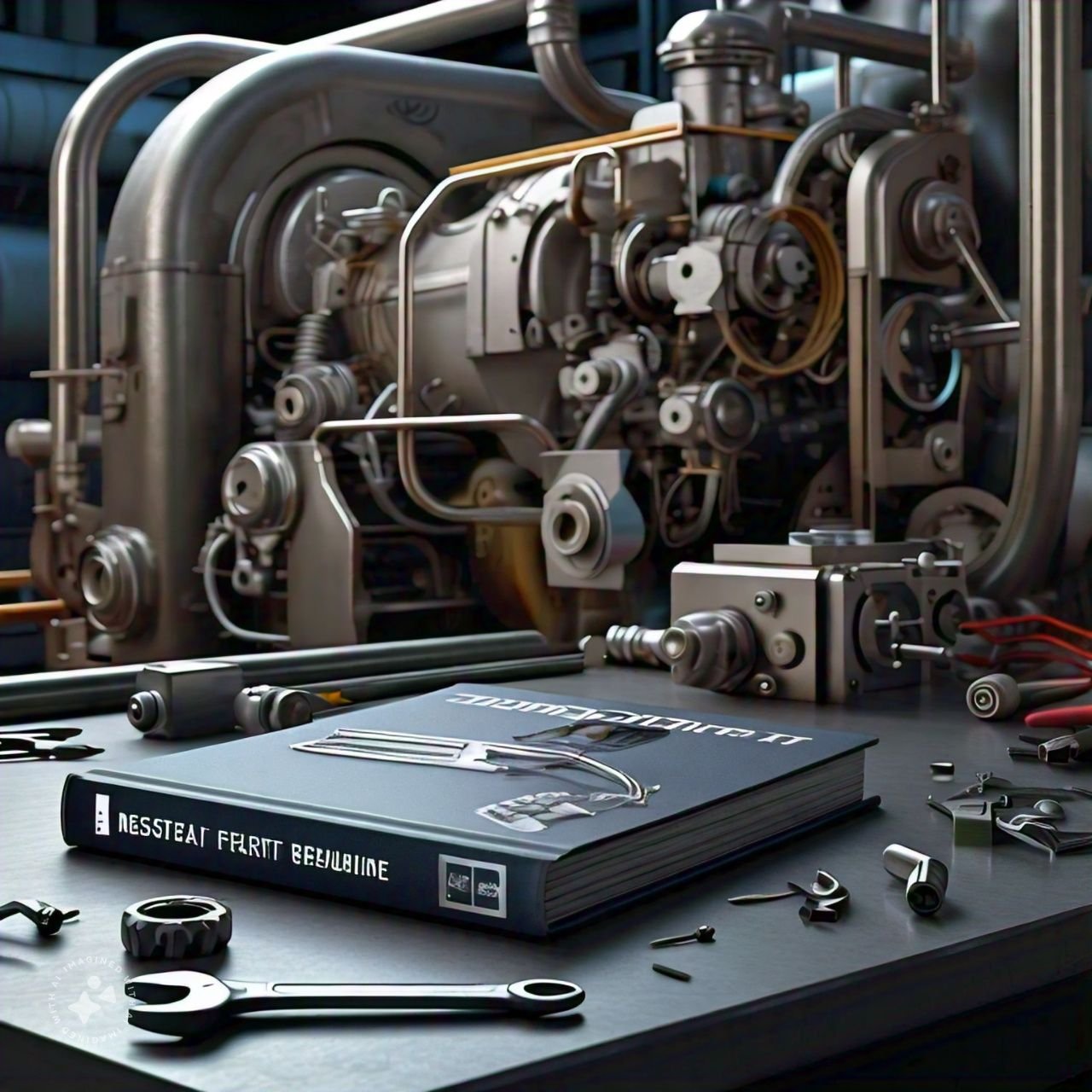Introduction
In today’s fast-paced digital world, reliable communication channels are crucial for various industries and applications. The UHF 403.527 channel plays an essential role in ensuring clear and efficient wireless communication. Positioned within the Ultra High Frequency (UHF) band, this specific channel offers a balanced combination of range, signal strength, and building penetration. From public safety agencies to industrial operations and personal use, the UHF 403.527 channel is a versatile frequency that caters to numerous needs. This comprehensive guide will explore its history, technical features, practical applications, and future trends.
Overview of the UHF Spectrum
The Ultra High Frequency (UHF) spectrum spans from 300 MHz to 3 GHz, making it a vital part of modern communication systems. UHF is used in many applications, such as television broadcasting, mobile phones, GPS, and Wi-Fi. The UHF 403.527 channel falls within this range, offering excellent building penetration and efficient data transmission capabilities. Its shorter wavelengths allow for smaller antenna designs, which are ideal for portable and vehicle-mounted devices.
What is the UHF 403.527 Channel?
The UHF 403.527 channel refers to the frequency of 403.527 MHz within the UHF band. This frequency is particularly valuable for its range, signal strength, and ability to penetrate buildings effectively. It supports a wide range of industries, including public safety services, industrial communications, and personal use. It is commonly found in land mobile radio systems, telemetry devices, and IoT networks.
Historical Background of UHF 403.527
UHF frequencies emerged as part of the expanding radio spectrum, designed to enhance communication beyond the limitations of Very High Frequency (VHF) systems. The UHF 403.527 channel was allocated to improve short-range communication, especially in urban environments with obstacles like buildings and other physical barriers. Initially used in industrial settings, this frequency has become increasingly essential for transportation, emergency services, and business communications.
Technical Characteristics of UHF 403.527 Channel
Frequency and Wavelength
- Frequency: 403.527 MHz
- Wavelength: Approximately 0.74 meters (calculated using the speed of light divided by the frequency).
This relatively short wavelength allows the UHF 403.527 channel to penetrate buildings effectively while maintaining strong signal quality over short to medium distances.
Propagation Properties
- Line-of-sight propagation: Ideal for clear, direct paths without obstructions.
- Building penetration: Performs better than higher frequencies, making it suitable for indoor use.
- Reflection and diffraction: Capable of reflecting off surfaces, enhancing performance in urban environments.
Antenna Considerations
For the UHF 403.527 channel, the optimal antenna length is about 18.6 cm. This size is practical for portable and vehicle-mounted devices. Users can choose between vertical or horizontal polarization, depending on environmental conditions and usage requirements.
Global Allocation and Regulations
The allocation and regulation of the UHF 403.527 channel vary across regions:
U.S. Standards (FCC)
The Federal Communications Commission (FCC) manages this frequency for public safety and mobile radio applications.
European Guidelines (ETSI)
The European Telecommunications Standards Institute (ETSI) oversees the use of UHF frequencies for business and public safety communications.
International Regulations (ITU)
The International Telecommunication Union (ITU) coordinates global frequency use to minimize cross-border interference.
Benefits of UHF 403.527 Channel for Different User Groups
Public Safety Agencies
Police, fire departments, and emergency medical teams use the UHF 403.527 channel for coordinated communication, ensuring reliable and secure connections during emergencies. Its building penetration capabilities make it ideal for urban areas.
Industrial and Business Use
Manufacturing plants, construction sites, and warehouses rely on the UHF 403.527 channel to facilitate communication and logistics management. It provides a stable connection, even in complex environments.
Personal and Hobbyist Applications
Hobbyists and amateur radio enthusiasts use the UHF 403.527 channel for non-commercial communication. Wireless microphones and other personal communication devices also operate near this frequency.
Comparison with Alternative Frequencies (UHF vs. VHF)
The UHF 403.527 channel offers a balance between range and signal strength. Unlike VHF frequencies, which have longer wavelengths, UHF channels like 403.527 MHz provide better building penetration and are less prone to interference. However, UHF generally has shorter ranges than VHF, making it ideal for localized communication needs.
Common Applications of UHF 403.527
Telemetry and Remote Monitoring
- Weather stations, environmental monitoring, and wildlife tracking systems use the UHF 403.527 channel to transmit data wirelessly.
- Hospitals rely on UHF telemetry to monitor patient health remotely.
IoT and Smart Devices
The UHF 403.527 channel supports low-power IoT networks in smart cities, enhancing urban infrastructure through wireless sensor networks.
Public Safety Communications
Emergency services like police, firefighters, and ambulance teams use this frequency to ensure reliable voice communication during critical operations.
Advantages and Limitations of UHF 403.527 Channel
Advantages
- Strong building penetration, making it suitable for urban environments.
- Less crowded than other frequencies, providing clearer communication.
- Small antennas, allowing for portable and mobile use.
- Balanced range and data capacity for diverse applications.
Limitations
- Requires a clear line of sight for optimal performance.
- Limited range may necessitate repeaters for larger coverage areas.
- Licensing requirements in most regions.
- Potential for interference, particularly in densely populated areas.
Setting Up Communication Systems Using UHF 403.527
- Choose Compatible Equipment: Select transceivers and antennas designed for UHF frequencies.
- Obtain Licensing: Apply for the necessary permissions from local regulatory bodies like the FCC or ETSI.
- Antenna Placement: Optimize antenna positions to ensure clear line-of-sight communication.
- Monitor Interference: Use filters and directional antennas to reduce unwanted noise.
- Regular Maintenance: Consistently check and maintain equipment for reliable performance.
Troubleshooting Common Issues
Interference Management
Use proper frequency planning and filters to minimize interference.
Optimizing Signal Quality
Ensure antennas are correctly placed and calibrated for the best performance.
Weather Impact
In severe weather, consider backup communication methods as atmospheric conditions may affect signal quality.
Future Trends and Technological Developments
Digital Migration and Narrowbanding
Transitioning from analog to digital systems improves efficiency and enhances data capabilities.
IoT Integration
The UHF 403.527 channel is increasingly adopted for IoT applications, supporting smart city and industrial automation networks.
Software-Defined Radio (SDR)
SDR technology allows devices to switch frequencies dynamically, improving spectrum efficiency and flexibility.
Case Studies: Real-World Use of UHF 403.527
Emergency Services
A city’s fire department uses the UHF 403.527 channel for seamless communication between units, ensuring rapid response times.
Industrial Applications
A manufacturing plant leverages UHF for internal logistics and machine monitoring, increasing productivity.
Environmental Impact and Sustainability Considerations
The UHF 403.527 channel enables wireless monitoring systems, reducing the need for extensive cabling. In agriculture, for example, farmers use UHF telemetry to monitor soil and water conditions, promoting eco-friendly farming practices.
FAQs on UHF 403.527 Channel
- Do I need a license to operate on the UHF 403.527 channel?
- Yes, most regions require a license from authorities like the FCC.
- Can I use UHF 403.527 for personal communication?
- Yes, but certain applications may require specific licensing.
- What equipment is needed for UHF 403.527?
- You’ll need a compatible transceiver, antenna, and possibly filters.
- How does UHF 403.527 compare to other UHF frequencies?
- It offers a balance of range and capacity, making it suitable for multiple applications.
- What are some innovative uses of this frequency?
- Beyond emergency services, it supports IoT networks and smart city infrastructure.
Conclusion: The Future of UHF 403.527 Channel
The UHF 403.527 channel is an essential part of modern communication, providing reliable and efficient connections across industries. With its balance of performance, reduced interference, and expanding applications, this frequency will remain valuable as technology advances. Understanding its capabilities and following best practices can help users leverage the full potential of this channel, ensuring clear communication now and in the future.


